Fracture Statistics for Inorganically-Bound Core Materials
Abstract
:1. Introduction
1.1. Mechanical De-Coring Properties of Inorganically-Bound Sand
1.2. Weibull Statistics
2. Materials and Methods
2.1. Specimen
2.2. Uni-Axial Constant Stress
2.3. Uni-Axial Non-Constant Stress
2.4. Finite Element Model
3. Results
3.1. Characterisation of the Fracture Behavior
3.2. Probabilistic Distribution of the Strength of Inorganically-Bound Sand Cores
3.3. Volume-Dependence of the Tensile Strength
3.4. Predicting Fracture Stresses for Arbitrary Bending Test Setups
3.5. FEM Simulation of the Four-Point Bending Test Setup
4. Discussion
4.1. Model Offset
4.2. Distinguishing between Volume and Surface Failure
5. Conclusions
Author Contributions
Funding
Acknowledgments
Conflicts of Interest
Abbreviations
| 3PB | 3-point-bending |
| 4PB | 4-point-bending |
| FEM | Finite element method |
| SEM | Scanning electron microscope |
References
- Polzin, H. Inorganic Binders: For Mould and Core Production in The Foundry; Fachverlag Schiele & Schön: Berlin, Germany, 2014. [Google Scholar]
- Bührig-Polaczek, A.; Träger, H. Foundry Technology. In Ullmann’s Encyclopedia of Industrial Chemistry; Wiley: Chichester, UK, 2010; Volume 1, p. 271. [Google Scholar]
- Ramakrishnan, R.; Volk, W.; Griebel, B.; Günther, D. 3D Printing of Inorganic Sand Moulds for Casting Applications. Adv. Mater. Res. 2014, 1018, 441–449. [Google Scholar] [CrossRef]
- Stauder, B.J.; Harmuth, H.; Schumacher, P. De-agglomeration rate of silicate bonded sand cores during core removal. J. Mater. Process. Technol. 2018, 252, 652–658. [Google Scholar] [CrossRef]
- Wolf, G.; Polzin, H. Verfahren zum Entkernen von Gussteilen mit anschließender Regenerierung des Kernaltsandes. Patent DE102015004889A1, 20 October 2016. [Google Scholar]
- Konzack, C. Entkernen von Gussprototypen mit Stoßwellen: Das Säubern von Gussteilen mit der Stoßwellentechnologie verkürzt die Produktionszeit bei ACTech deutlich; GIESSEREI; Giesserei-Verlag: Düsseldorf, Germany, 2013; Volume 11, pp. 62–63. [Google Scholar]
- Stauder, B.J.; Kerber, H.; Schumacher, P. Foundry sand core property assessment by 3-point bending test evaluation. J. Mater. Process. Technol. 2016, 237, 188–196. [Google Scholar] [CrossRef]
- Griebel, B.; Brecheisen, D.; Ramakrishnan, R.; Volk, W. Optical Measurement Techniques Determine Young’s Modulus of Sand Core Materials. Int. J. Metalcast. 2016, 10, 524–530. [Google Scholar] [CrossRef]
- Izdebska-Szanda, I.; Balinski, A. New generation of ecological silicate binders. Procedia Eng. 2011, 10, 887–893. [Google Scholar] [CrossRef]
- Danzer, R.; Supancic, P.; Pascual, J.; Lube, T. Fracture statistics of ceramics—Weibull statistics and deviations from Weibull statistics. Eng. Fract. Mech. 2007, 74, 2919–2932. [Google Scholar] [CrossRef]
- Danzer, R. A General Strength Distribution Function for Brittle Materials. J. Eur. Ceram. Soc. 1992, 10, 461–472. [Google Scholar] [CrossRef]
- Todinov, M.T. Is Weibull distribution the correct model for predicting probability of failure initiated by non-interacting flaws? Int. J. Solids Struct. 2009, 46, 887–901. [Google Scholar] [CrossRef] [Green Version]
- Gong, J. Correlation between Weibull moduli for tensile and bending strength of brittle ceramics: A numerical simulation analysis based on a three-parameter Weibull distribution. J. Mater. Sci. 2003, 38, 2541–2545. [Google Scholar] [CrossRef]
- Assmann, B.; Selke, P. Technische Mechanik Band 3: Kinematik und Kinetik; Oldenburg Verlag: Berlin, Germany, 2004; Volume 13. [Google Scholar]
- Magnus, K.; Müller-Slany, H.H. Grundlagen der Technischen Mechanik, 7th ed.; Studium, Vieweg + Teubner: Wiesbaden, Germany, 2009. [Google Scholar]
- Schneider, M.; Hofmann, T.; Andrä, H.; Lechner, P.; Ettemeyer, F.; Volk, W.; Steeb, H. Modelling the microstructure and computing effective elastic properties of sand core materials. Int. J. Solids Struct. 2018, 143, 1–17. [Google Scholar] [CrossRef]
- Weibull, W. A Statistical Theory of the Strength of Materials; Royal Swedish Institute for Engineering Research: Stockholm, Sweden, 1939. [Google Scholar]
- Weibull, W. A Statistical Distribution Function of Wide Applicability. J. Appl. Mech. 1951, 18, 290–293. [Google Scholar]
- Bennett, J. A Weibull Brittle Material Failure Model for the ABAQUS Computer Program; Technical report; Los Alamos National Laboratory: Los Alamos, NM, USA, 1991.
- The MathWorks, Inc. Statistics and Machine Learning Toolbox User’s Guide; The MathWorks, Inc.: Natick, MA, USA, 2016. [Google Scholar]
- The MathWorks, Inc. Mathematics User’s Guide; The MathWorks, Inc.: Natick, MA, USA, 2016. [Google Scholar]

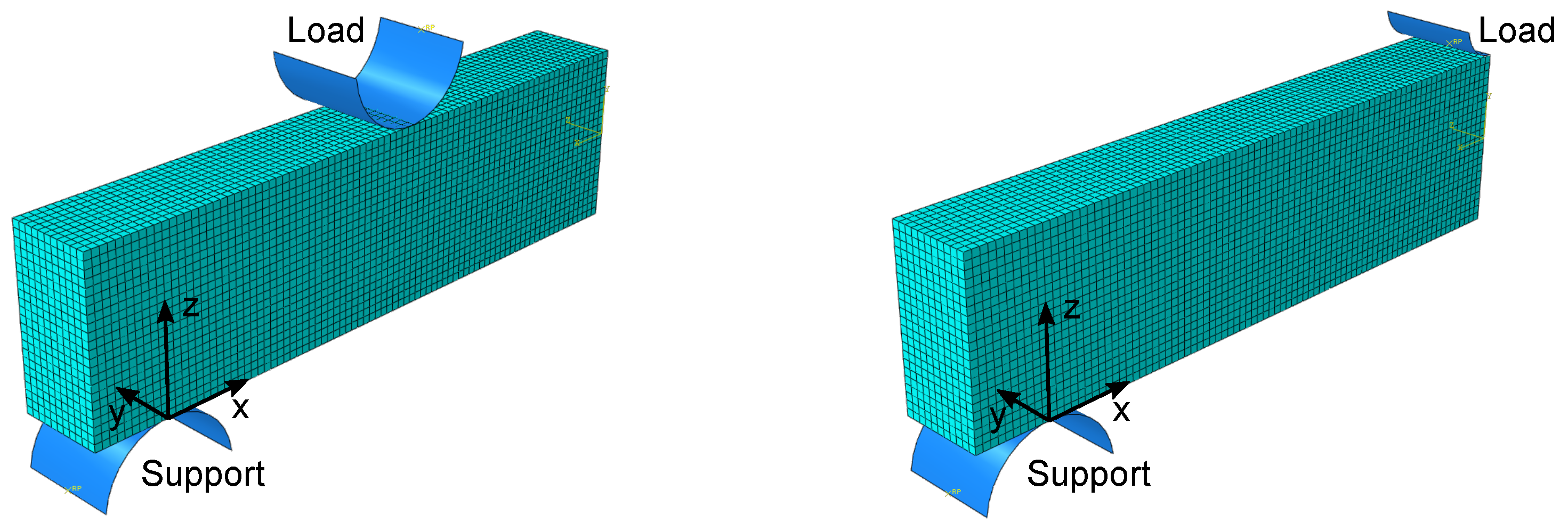


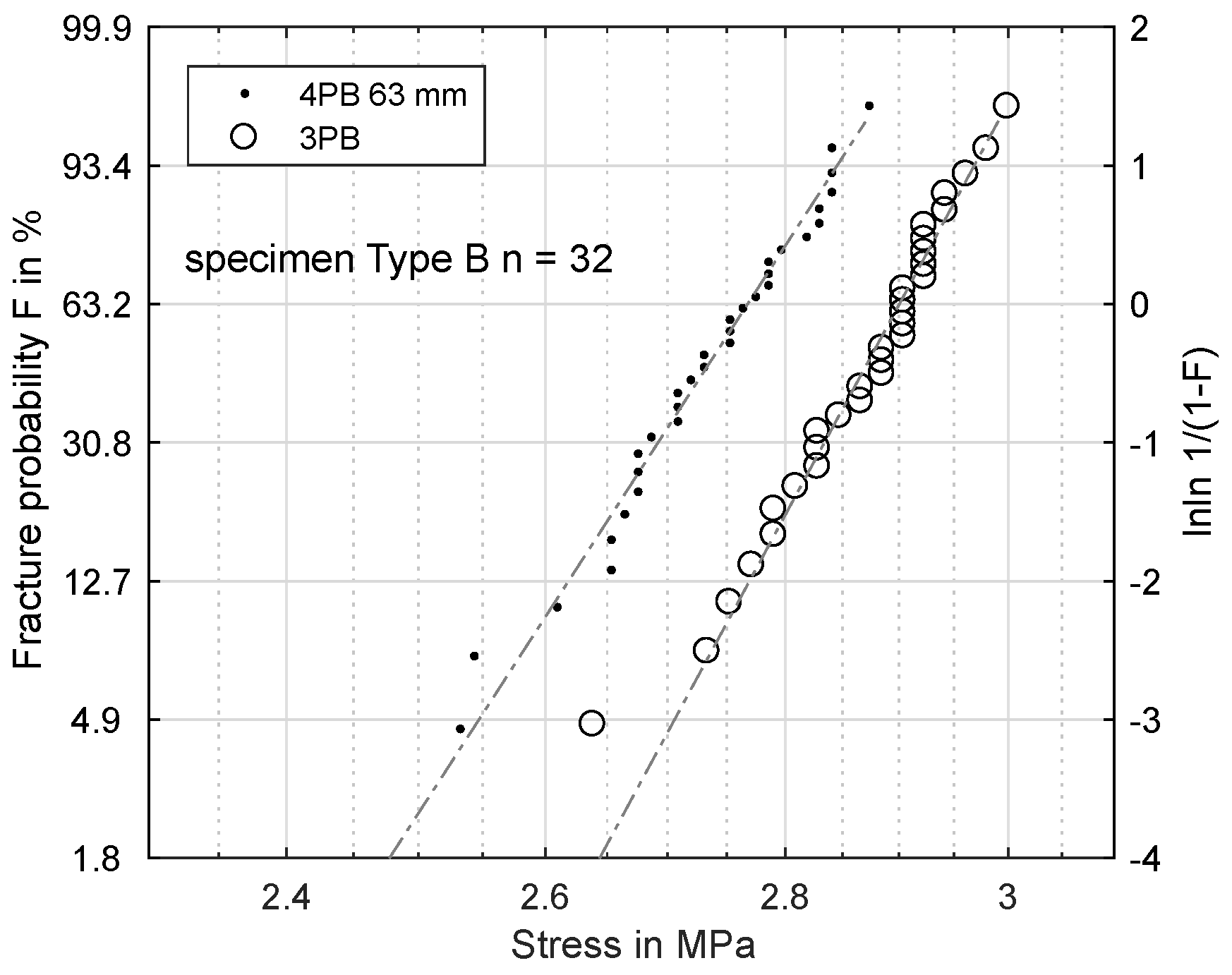
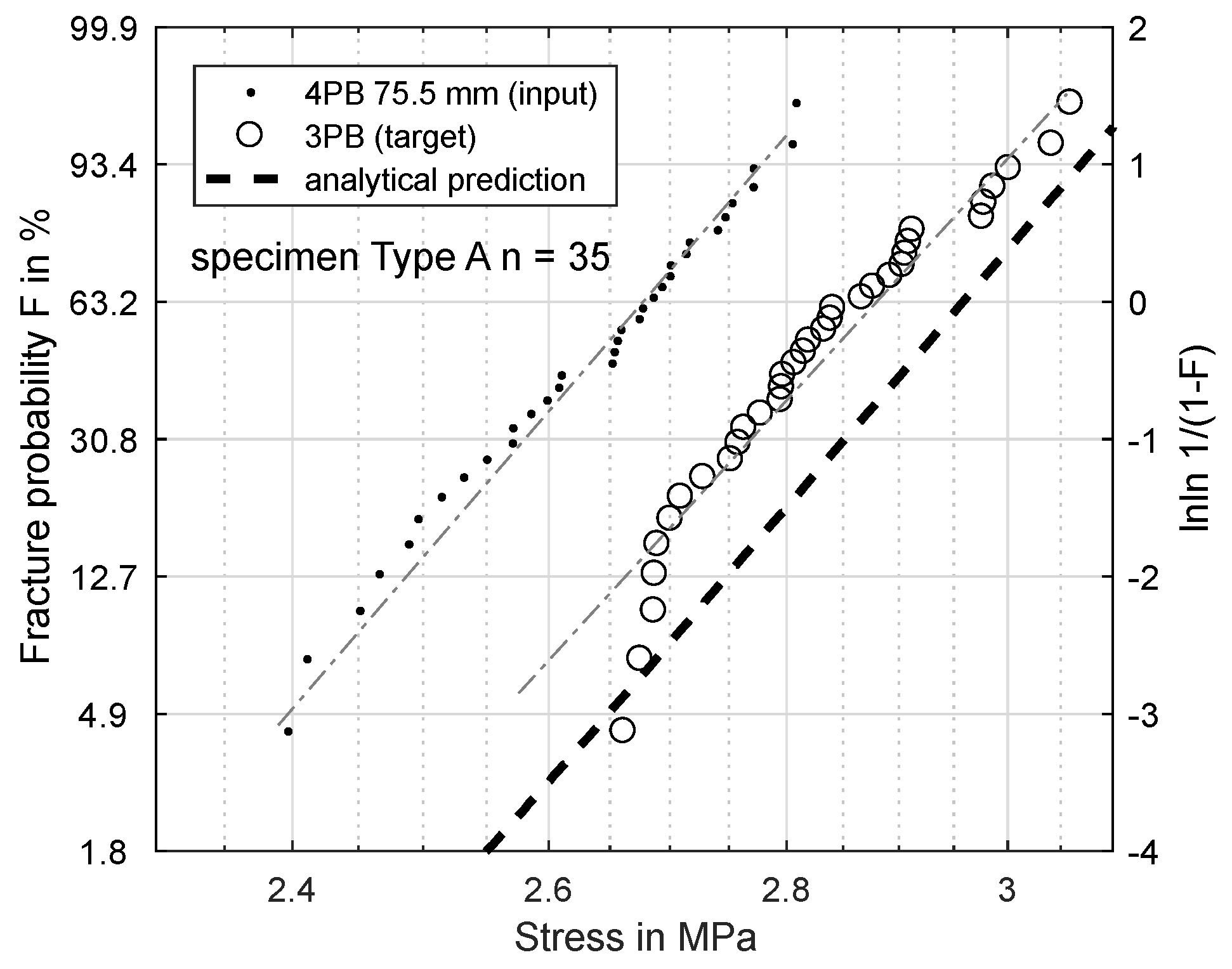
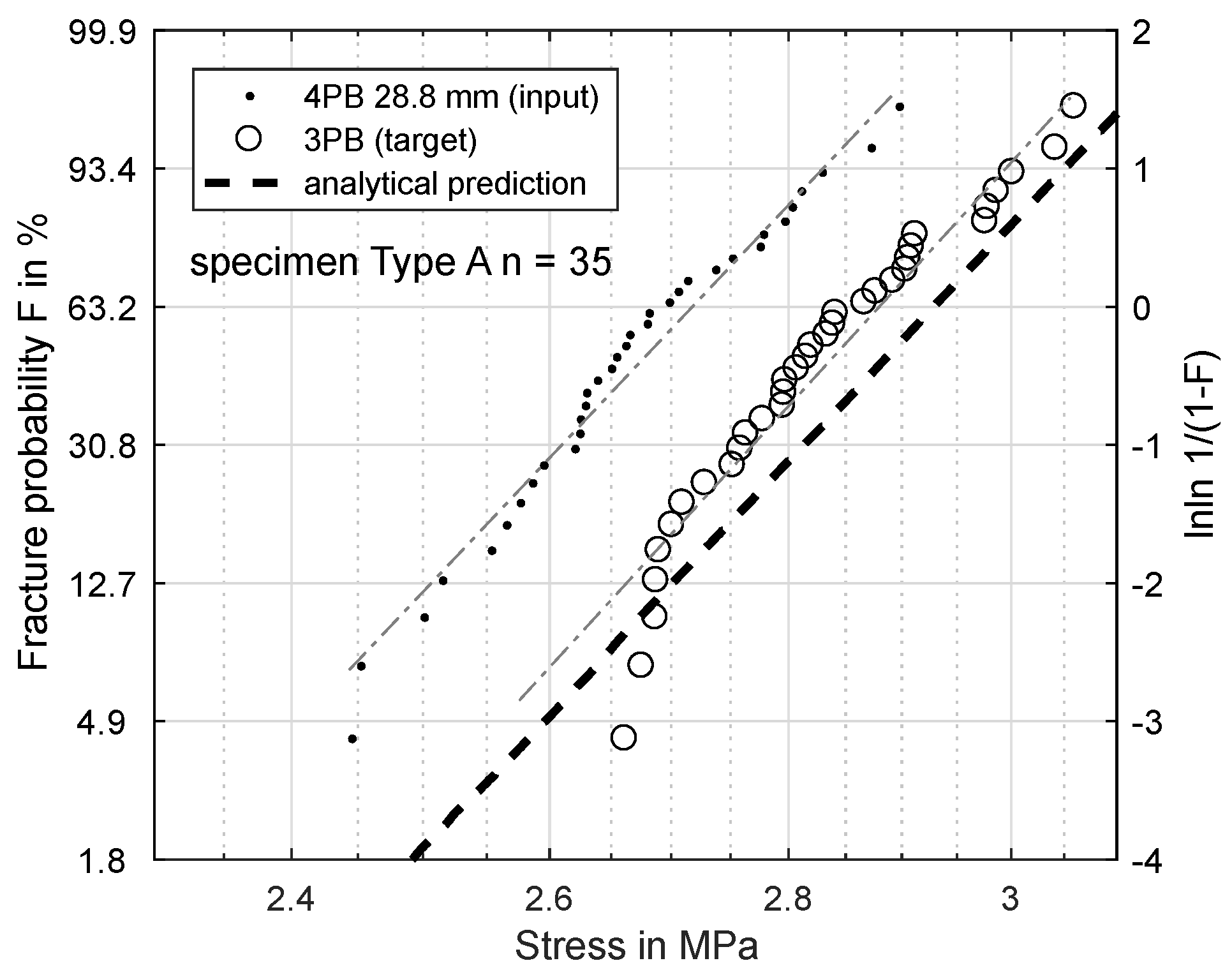





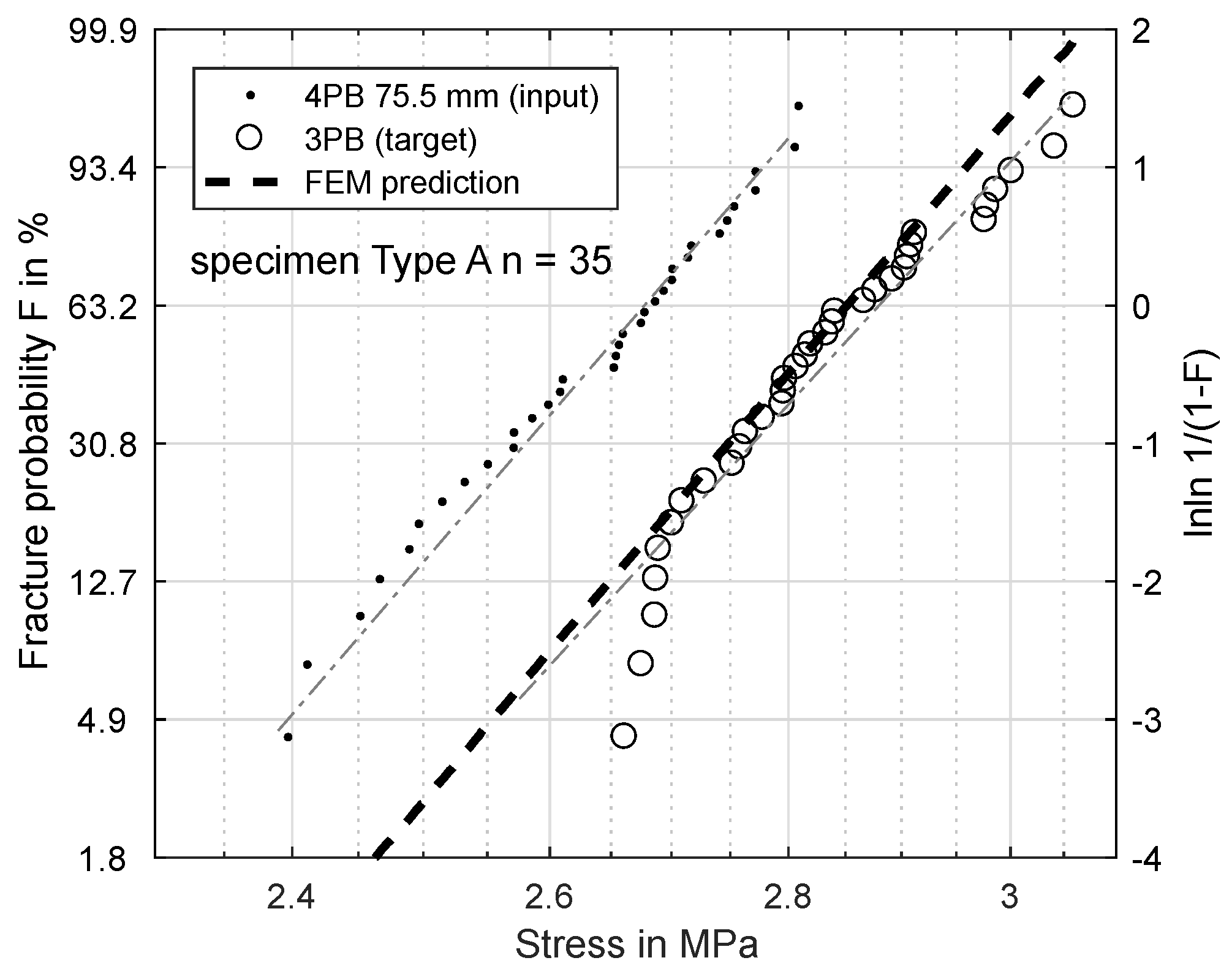
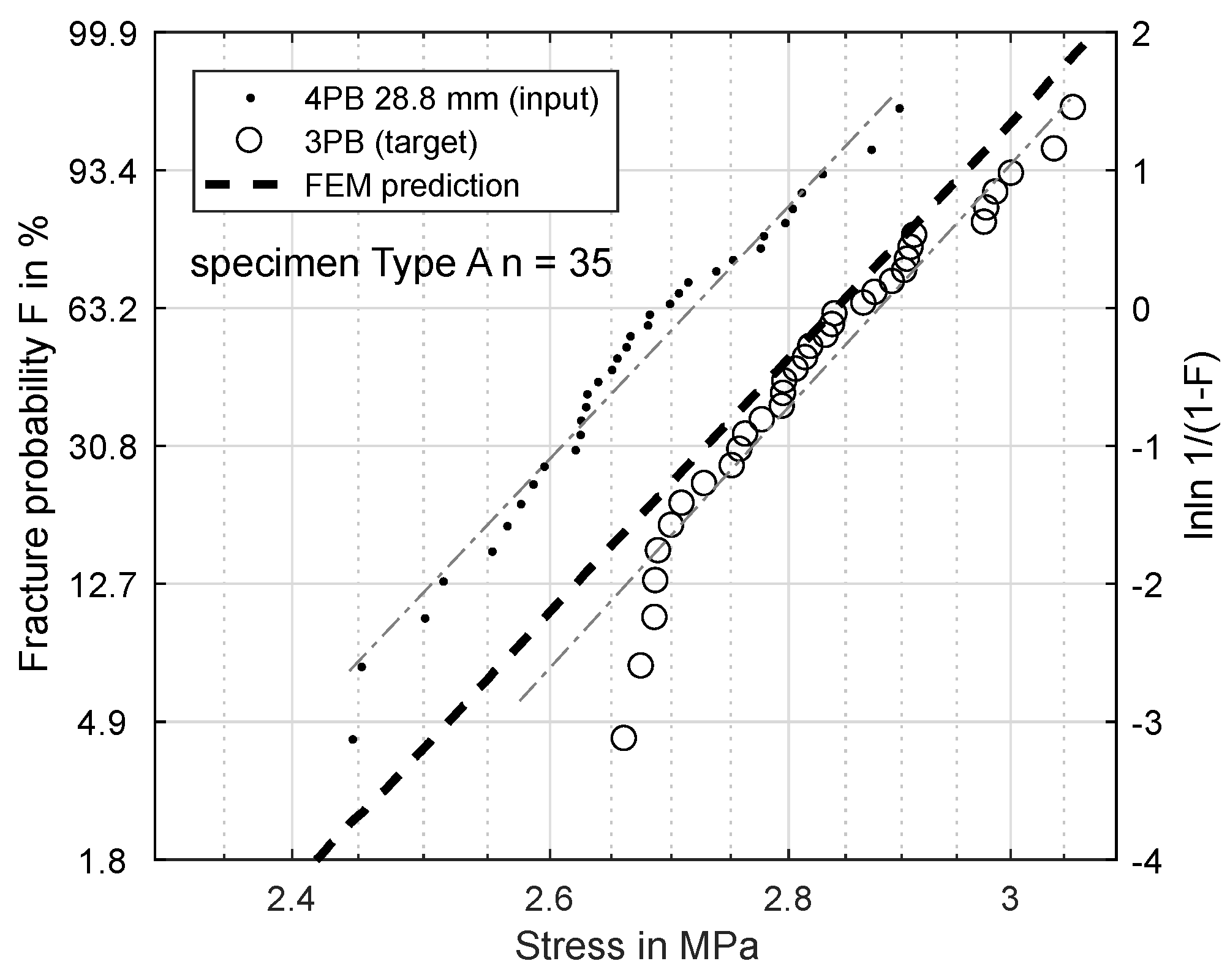
© 2018 by the authors. Licensee MDPI, Basel, Switzerland. This article is an open access article distributed under the terms and conditions of the Creative Commons Attribution (CC BY) license (http://creativecommons.org/licenses/by/4.0/).
Share and Cite
Lechner, P.; Stahl, J.; Ettemeyer, F.; Himmel, B.; Tananau-Blumenschein, B.; Volk, W. Fracture Statistics for Inorganically-Bound Core Materials. Materials 2018, 11, 2306. https://doi.org/10.3390/ma11112306
Lechner P, Stahl J, Ettemeyer F, Himmel B, Tananau-Blumenschein B, Volk W. Fracture Statistics for Inorganically-Bound Core Materials. Materials. 2018; 11(11):2306. https://doi.org/10.3390/ma11112306
Chicago/Turabian StyleLechner, Philipp, Jens Stahl, Florian Ettemeyer, Benjamin Himmel, Bianca Tananau-Blumenschein, and Wolfram Volk. 2018. "Fracture Statistics for Inorganically-Bound Core Materials" Materials 11, no. 11: 2306. https://doi.org/10.3390/ma11112306




